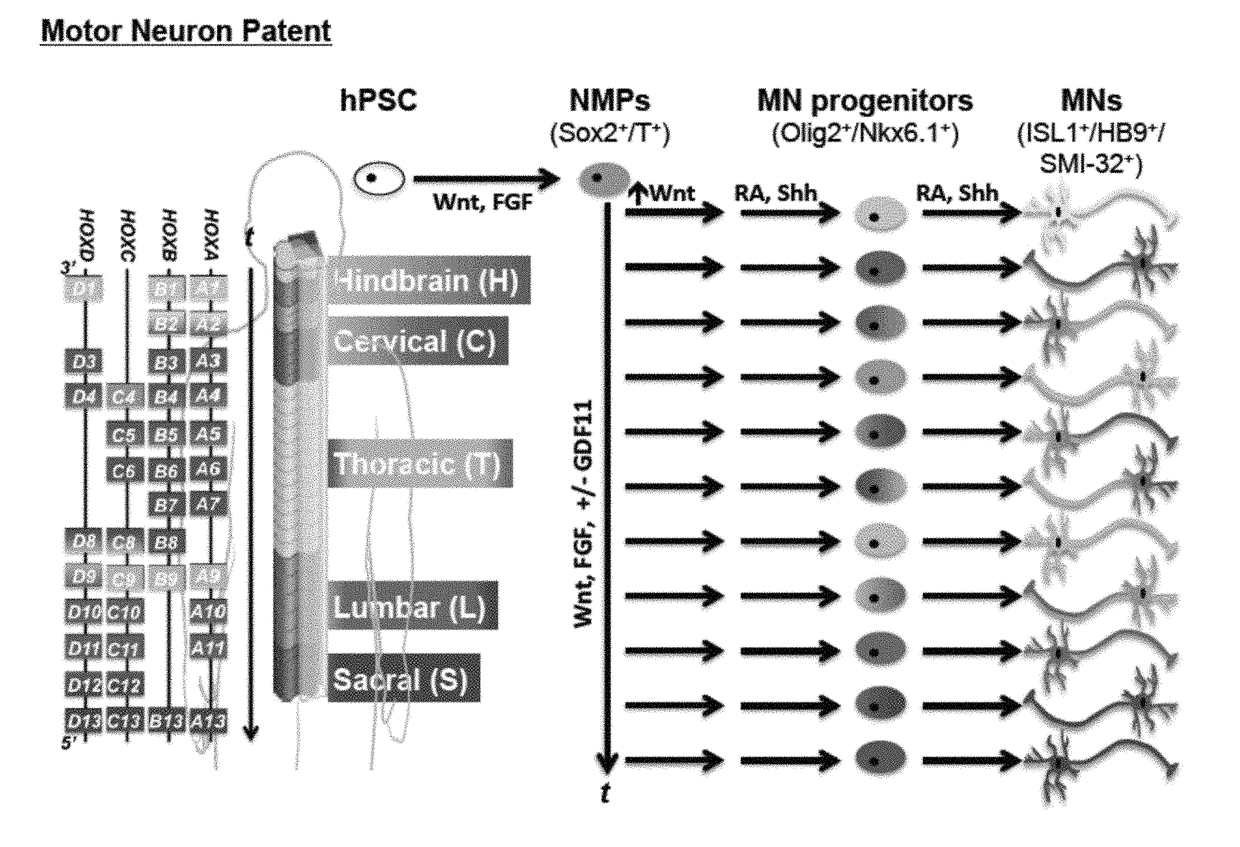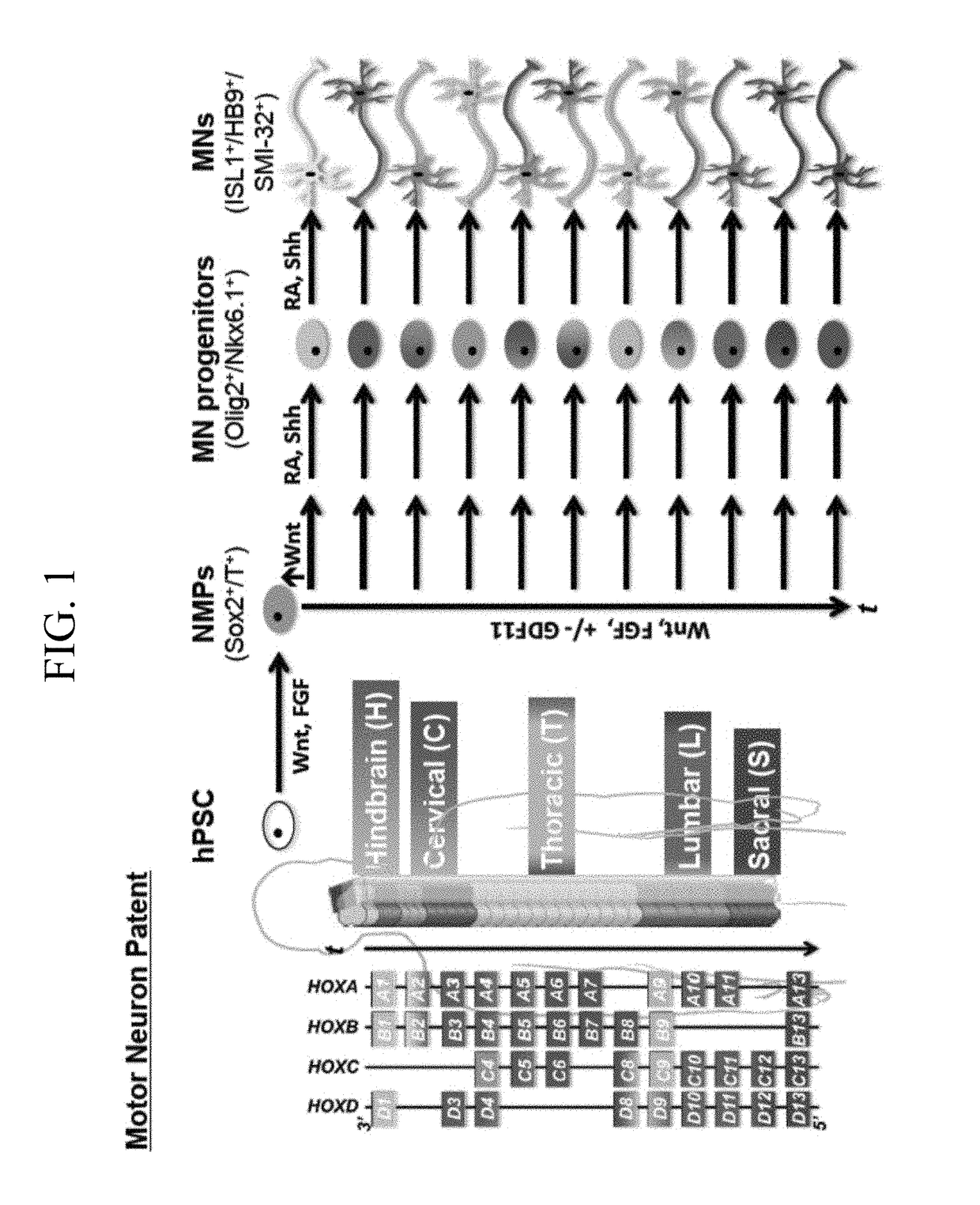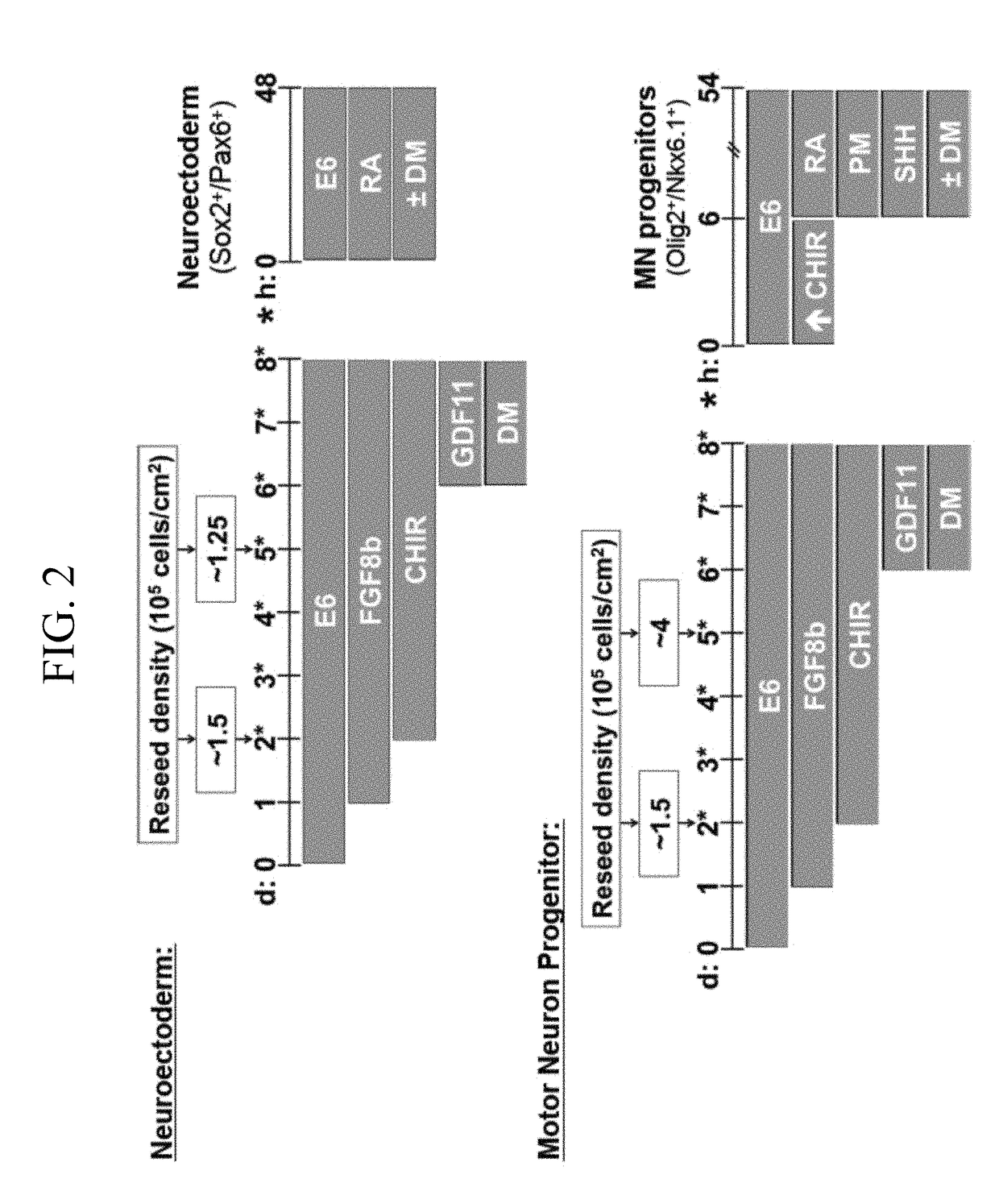Methods for efficient derivation of human motor neurons from diverse spinal regions
a technology of motor neurons and spinal cord, which is applied in the direction of biochemistry apparatus and processes, cell culture active agents, and embryonic cells, etc., can solve the problems of limited progress in effectively controlling hpsc specification to various segments of hindbrain and spinal cord
- Summary
- Abstract
- Description
- Claims
- Application Information
AI Technical Summary
Benefits of technology
Problems solved by technology
Method used
Image
Examples
example 1
Wnt / β-Catenin Regulates Ventral Transcription Factor NKX6.1 Expression during hPSC Motor Neuron Differentiation
[0083]In the ventral neural tube, SHH signaling generates OLIG2+ motor neuron progenitors that subsequently mature into post-mitotic ISL1+ and / or HB9+ motor neurons. To probe the role of Wnt / β-catenin signaling during this process in vitro, we utilized the H9 ishcat2 hESC line, which harbors a doxycycline-inducible shRNA against CTNNB1. Lian et al. previously demonstrated efficient β-catenin knockdown in the H9 ischcat2 line after 3 days of doxycycline treatment (Robust cardiomyocyte differentiation from human pluripotent stem cells via temporal modulation of canonical Wnt signaling. Proc. Natl. Acad. Sci. 109, E1848-E1857 (2012)).
[0084]Similarly, we induced β-catenin knockdown while differentiating the hESCs into motor neurons via E6 neural induction with RA (1 μM), purmorphamine (PM, a small molecule agonist of sonic hedgehog signaling; 100 nM), and neurotrophic factor tr...
example 2
Transient Wnt / β-Catenin followed by RA and SHH Signaling Promotes Efficient Induction of OLIG2+ Motor Neuron Progenitors
[0086]The rostrocaudal and dorsoventral patterning effects of Wnt / β-catenin can be difficult to decouple. For example, the results described above could be attributed to caudalization of neural progenitors, making them more permissible to enter a ventralized state. To rule out this possibility, the published method for deterministically patterning neuroectoderm along the posterior CNS's rostrocaudal axis (Lippmann, E. S. et al. Deterministic HOX Patterning in Human Pluripotent Stem Cell-Derived Neuroectoderm. Stem Cell Rep. 4, 632-644 (2015)) was used (FIG. 5A). This method relies on Wnt / β-catenin and FGF signaling to direct hPSCs to a SOX2+ / Brachyury+ neuromesodermal state that exhibits full collinear HOX activation. Then, at any point during collinear HOX activation, transitioning to RA-containing media halts HOX activation and induces differentiation to PAX6+ / SO...
example 3
High Cell Density Effectively Generates OLIG2+ Motor Neuron Progenitors
[0090]Having demonstrated efficient generation of OLIG2+ motor neuron progenitors at the cervical spinal cord level, the CHIR boost strategy did not yield similar results when patterning OLIG2+ progenitors possessing thoracic and lumbar HOX identity. However, OLIG2 induction was less efficient upon employing the standard deterministic HOX patterning protocol to generate thoracic and lumbar neuromesoderm followed by a CHIR boost and application of RA and SHH / PM (FIG. 6A). Only 11±2% and 67±9% of the cells in the thoracic and lumbar cultures, respectively, were PAX6+ / OLIG2+ (FIGS. 6B-6C). We noted that our standard neuromesodermal protocol always used a reseed density of 1.5×105 cells / cm2, which generates a relatively confluent but not tightly packed cell monolayer 24 h after seeding. Having previously determined that cell density and cell-cell contacts can serve as modulators of neural fate, we explored the effect...
PUM
| Property | Measurement | Unit |
|---|---|---|
| concentration | aaaaa | aaaaa |
| concentration | aaaaa | aaaaa |
| concentration | aaaaa | aaaaa |
Abstract
Description
Claims
Application Information
 Login to View More
Login to View More - R&D
- Intellectual Property
- Life Sciences
- Materials
- Tech Scout
- Unparalleled Data Quality
- Higher Quality Content
- 60% Fewer Hallucinations
Browse by: Latest US Patents, China's latest patents, Technical Efficacy Thesaurus, Application Domain, Technology Topic, Popular Technical Reports.
© 2025 PatSnap. All rights reserved.Legal|Privacy policy|Modern Slavery Act Transparency Statement|Sitemap|About US| Contact US: help@patsnap.com



